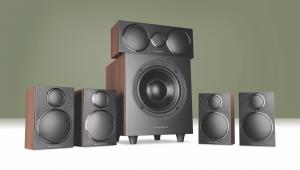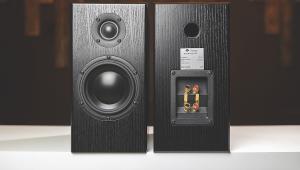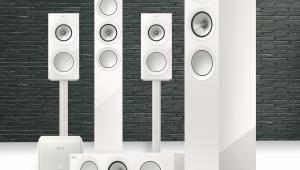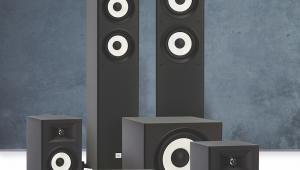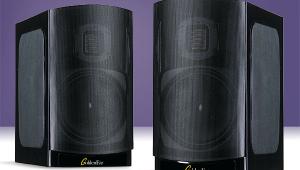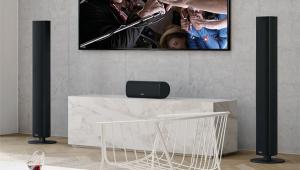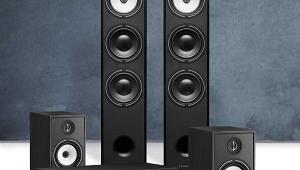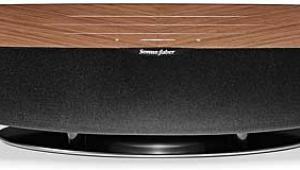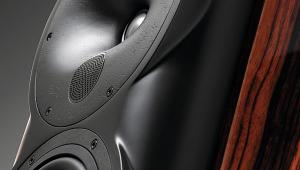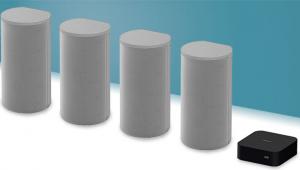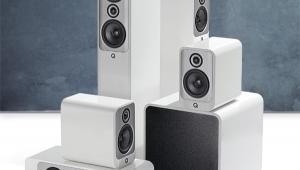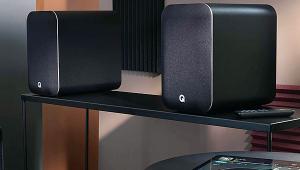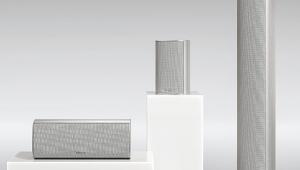Q Acoustics Q7000 review
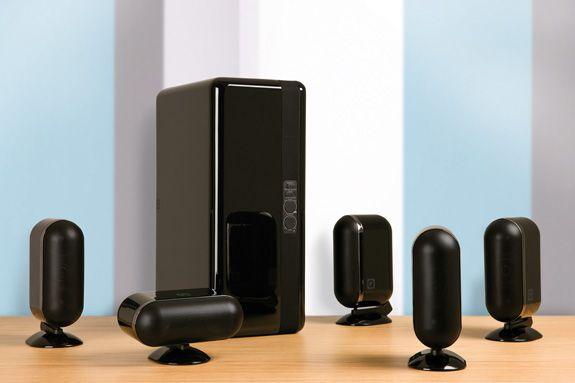
About five years ago Armour Home ceased distributing Mission speakers and made the questionable decision to design and produce its own speaker brand. Q Acoustics was born.
The company operates in a somewhat unconventional manner for a speaker maker. It minimises its risks by engaging designers and engineers as and when they are needed on an ad-hoc freelance basis. Yet so far, the story has been one of steady success. The brand introduced Q AV, the world’s first speakers to feature ‘BMR’ (Balanced Mode Radiator) drive units, licensed from NXT, and achieved acclaim for the sonic prowess of its Q1000 and Q2000 systems; highly impressive, albeit box-shaped. The latest challenge for the company has been to design a contemporary-looking home cinema speaker system that does the business with multichannel movie soundtracks, and satisfies the aural demands of music enthusiasts.
Armour has high expectations for the Q7000. As its cuddly PR manager Steve Reichert me whilst decanting this 5.1 array from its packaging, ‘Designing from a blank piece of paper is a distinct advantage. We have no baggage and we’re not tied to any particular system. This means we are able to exploit the very latest thinking and improvements in technology. Every single component has been designed specifically to do the job we need and the designers are the leading guys in their field.’
For reasons of commercial sensitivity Reichert won’t say who Armour engaged to technically design the Q7000 but I wouldn’t be surprised to find some ex-Mission noodlers involved. He also reveals his own involvement as the man with the ‘golden ears’ who ensures the blueprint translates into the sonic performance and presentation that Armour wants.
The system’s catwalk looks speak for themselves. The aluminium cabinets really are exquisite, beautifully finished in piano gloss black (also available in an even more contemporary white). They’re solid, sumptuous and sport more curves than Beyoncé, but are arguably marred by the two-tone Q logo that’s worked in to the side of each speaker.
The oblong subwoofer is finished to an equally high standard, and has a remarkable construction, featuring a 10in ultra long-throw bass driver that fires internally against a heavy, rigid ‘sounding board’. This surface deflects the bass notes through slim grilles located on the top and both sides of the unit. The oblong design provides greater placement flexibility than your traditional square box.
Access to the hidden connections is achieved by removing the sounding board cover using an Allen key. There are line-level inputs, plus high-level inputs for use with AVRs bereft of a dedicated subwoofer output. The controls are on the top and include a powering-up sensitivity switch and LED status light.
General assemblyI tested the Q7000 in a 5.1 configuration, consisting of four full-range 7000LRs, a 7000C centre and the 7000S sub, but Armour also sells 7000LRs by the pair. They come with solid built-in table-top stands that can be swivelled into instant wall-mounts or tilted upwards. A rather gorgeous floor stand for the satellites, priced at £125 a pair, complete with practical cable management, is also available.
The clean look is maintained by hiding the high-quality spring-action terminals discreetly in the base. A small gripe: the cable aperture is narrow, making it tricky to thread decent quality speaker cable through.
The cabinet grilles are fine-meshed yet sturdy, and can be removed to reveal the three drive units – two 3in mid/bass drivers either side of a bespoke 1in ring radiator tweeter. The enclosures are cast in aluminium and damped internally to eliminate cabinet resonance. Lightweight coated paper is used for the cone material, which combines with a rubber surround and enables the speaker to deliver, says Armour Home, a wide dynamic range, low distortion and fast transients.
Depth chargeWith the Q7000 running through an Onkyo TX-NR709 receiver I settled down to enjoy some sonic thrills – and straight away, I was impressed by the power and depth of the soundstage generated by such pint-sized pots. Close your eyes and you might think these are coffin-sized floorstanders.
Despite the size of these cabinets, there’s no lack of control or definition, with the system taking the disparate effects of Monsters vs Aliens’ DTS-HD MA soundtrack in its stride. Rustling wind noises float gently across the rears whilst dialogue sings out of the centre. The collapsing bridge scene is handled with aplomb and the subwoofer disperses LFE with agility. However, it must be gently cajoled into not stealing the show by carefully tweaking the volume.
Taking things up another notch, Avatar’s sensational DTS-HD MA mix is a real knock-out. The scene when Jake Sully’s intellectually-challenged Avatar runs through the Pandoran forest at night causing havoc is a delightful multichannel symphony of humming insect sounds, distant bird calls, raking foliage, roaring beasts and the wooshing of Sully’s fire torch. In other words, a great workout across the entire dynamic range, and one which the Q7000 passes with flying colours; the system can really pick out subtle individual sounds. This is also shown by the reproduction of an often unheard effect in Fantastic Four’s DTS mix. When the suicidal man is scared back by the Thing and falls on to the bridge, there’s a very brief zipping noise that is usually lost amongst the over-dominant cacophony of vehicles and background music. Not here.
But all systems have their limits and the Q7000‘s is shown by the immense crashing sound when the huge truck ploughs in to the Thing’s shoulder. It simply feels underwhelming compared with beefier systems.
The system bounces back with orchestrated music. I closed my eyes and listened to Hilary Hahn’s superb SACD recording of The Lark Ascending. I was transported to the pit of the Royal Festival Hall, every instrument distinct and precise, even the sound of Hahn’s bow drawing down the violin’s strings.
Proud performerQ Acoustics can be rightly proud of the Q7000, which is proof that its freelance approach to speaker design can yield brilliant results. In fact, I reckon you’ll be hard pressed to find the same level of performance from any other designer 5.1 system at this price. I’m beginning to wonder: do I really need floorstanders?
HCC VERDICT
Highs: Classy design; high-quality build; good scale, control and dynamic range
Lows: Centre may be too tall for some TV stands; over-keen sub needs taming and has tricksy connections
Performance: 5/5
Design:5/5
Features: 4/5
Overall: 5/5
Specifications
Q Acoustics Q7000 LR
Drive Units: 2 x 3in long-throw neodymium bass drivers; 1 x 1in neodymium high-frequency ring radiator tweeter
Enclosure: Two-way, sealed
Frequency Response: 95Hz-20KHz
Sensitivity: 85dB
Power Handling: 15-100W
Dimensions (inc table stand): 100(w) x 240(h) x 160(d)mm
Weight: 1.6kg
Q Acoustics Q7000 centre
Drive Units: 2 x 3in long-throw neodymium bass drivers; 1 x 1in neodymium high-frequency ring radiator tweeter
Enclosure: Two-way, sealed
Frequency Response: 95Hz-20KHz
Sensitivity: 85dB
Power Handling: 15-100W
Dimensions (inc table stand): 207(w) x 115(h) x 160(d)mm
Weight: 1.6kg
Q Acoustics Q7000 subwoofer
Drive Unit: 1 x 10in high-excursion
Enclosure: MDF, ‘infinite baffle’
Frequency Response: 30Hz-220Hz
On board power: 250W
Dimensions: 510(w) x 370(h) x 215(d)mm
Weight: 18kg
Connections: 2 x phono line-level inputs; 2 x speaker level inputs
 |
Home Cinema Choice #351 is on sale now, featuring: Samsung S95D flagship OLED TV; Ascendo loudspeakers; Pioneer VSA-LX805 AV receiver; UST projector roundup; 2024’s summer movies; Conan 4K; and more
|




